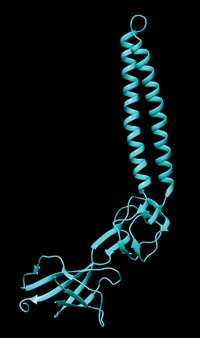Advertisement
Grab your lab coat. Let's get started
Welcome!
Welcome!
Create an account below to get 6 C&EN articles per month, receive newsletters and more - all free.
It seems this is your first time logging in online. Please enter the following information to continue.
As an ACS member you automatically get access to this site. All we need is few more details to create your reading experience.
Not you? Sign in with a different account.
Not you? Sign in with a different account.
ERROR 1
ERROR 1
ERROR 2
ERROR 2
ERROR 2
ERROR 2
ERROR 2
Password and Confirm password must match.
If you have an ACS member number, please enter it here so we can link this account to your membership. (optional)
ERROR 2
ACS values your privacy. By submitting your information, you are gaining access to C&EN and subscribing to our weekly newsletter. We use the information you provide to make your reading experience better, and we will never sell your data to third party members.
Biological Chemistry
Spilling Bacteria’s Molecular Secrets
Genetic trick might pull back the curtain on potential drugs
by Carmen Drahl
December 10, 2012
| A version of this story appeared in
Volume 90, Issue 50
Starting with soil from the Arizona desert, Rockefeller University chemists have hit pay dirt—a small molecule called tetarimycin A that kills methicillin-resistant Staphylococcus aureus in cell cultures (J. Am. Chem. Soc., DOI: 10.1021/ja3093828). They found the molecule by activating biosynthetic gene clusters plucked from the soil. The method has the potential to solve a vexing problem for chemists: Only a small portion of Earth’s microbial inhabitants are easy to culture in a lab, so it’s been tough to study the potentially useful natural products they make. One way around this problem is to pull bacterial DNA from environmental samples and insert natural-product-making genes into easily cultured bacteria, such as certain species of Streptomyces. Oftentimes, though, the genes don’t perform in that unfamiliar milieu. Working with their Arizona soil, Dimitris Kallifidas, Hahk-Soo Kang, and Sean F. Brady found an “on” switch—a transcription factor called tamI. By arranging for transcription to be constantly on, and by combining the transcription factor with the biosynthetic genes, the team isolated the natural product tetarimycin A from a Streptomyces host. The team thinks the strategy should be adaptable for high-throughput screens.





Join the conversation
Contact the reporter
Submit a Letter to the Editor for publication
Engage with us on Twitter